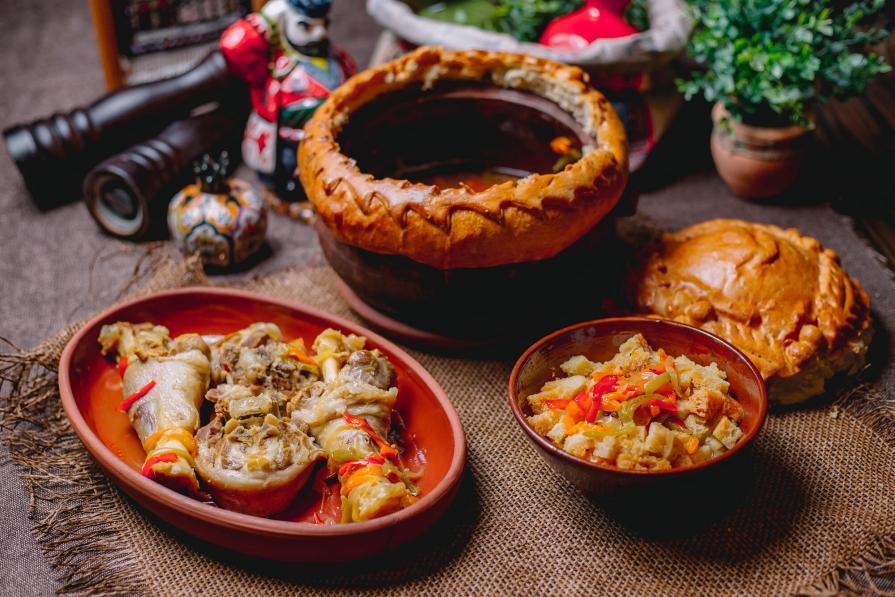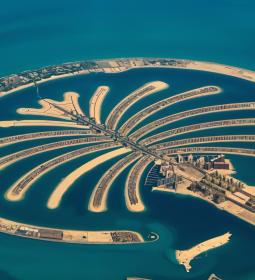Romanian cuisine is based on the main things that make up the majority of national cuisines. These are vegetable dishes, milk, meat of different varieties and seafood. The most popular in Romania are pork and beef, poultry. Other meats are also common, but to a lesser extent. River and sea fish are respected equally as other seafood, preferring shellfish.
For heat treatment, along with traditional kitchen stoves or gas stoves, use a grid of thick iron rods, called gratar. It is placed over hot charcoal (beech, oak or walnut are preferred: these species of wood burn for a long time, although very capricious to ignition). This is something like a grill, used in South Dobruja and Moldovan cuisine. Before use, gratar is abundantly smeared with vegetable oil.
Vegetables are also important, especially corn, popular both fresh and as a base for salads, main courses, soups and even dessert. Beans and tomatoes are also used for garnish.
Milk is dominated by cottage cheese, sour cream and numerous hard and rennder cheeses.
Wine traditions are strong.
Romanian menu
The traditional Romanian table was formed over the decades, because the country was the last stronghold of the Roman Empire, its soft underbelly on one side and the border on the other. This determined not only the situation in the domestic and foreign policy of the region, but also culinary and social traditions.
Special mention deserves geographical location. The Carpathians protect the flat, replete with fresh water bodies of the country from political troubles and invasions from the north, which made it possible to intensively engage in agriculture, fishing, sometimes collecting not even one, but two crops a year. At the same time, numerous trade routes passed along the coast, including the famous and largest Eastern European corridor "From the Varangians to the Greeks", which made it possible to gain access to two largest markets: the Byzantine one in the south and the Russian one in the north, where it was possible to sell spices, wines and products of local masters.
Anyway, back to the food.
First
The most common first dish is chorba - a hot soup equally found in Romania, among Serbs, Turks, Macedonians, Bulgarians and Croats with Montenegrins. The proportion of the liquid part does not exceed half, but usually is about a quarter and ultimately depends on the recipe and ideas about the beautiful from the chef who made the dish.

The soup is seasoned with wheat flour, and sometimes - in the light version - with vegetables or offal (in this case, more vegetables are laid in the brew). This dish is served with chopped testicles, slices of bread from grain or rye, and sometimes cabbage brine.
Dairy products
Among the milk in Romania, the undoubted leader is brynza. In general, Romanians prefer soft cheeses, cottage cheese with herbal additives, sour cream. Most sauces and additives are prepared on the basis of sour cream or soft cheese. Milk is also in honor - it is customary for them to wash down a meal at the very end.
Traditional Romanian cheeses
Let's briefly dwell on the main cheeses.
Urda
This variety makes their sheep milk and whey. The structure of the finished product has a homogeneous consistency, quite soft, taste - neutral. Among the advantages are long shelf life: in the freezer, such a product can lie for several weeks without any damage to itself. In fact, a close analogue of the Mediterranean ricotta, with the only difference that there it is made from the milk of a cow.
Telemea
Creamy consistency of white cheese with a soft and delicate taste. Also "Romanians", can be both from dairy raw materials of cows and sheep. The taste grows as it ripens, acquiring unusual sweetish-sour shades.
It can be served as an independent dish or serve as a filling for omelets, scrambled eggs, pancakes or pies.
Kashkaval
Another sheep cheese (options are possible). It has a smooth surface without holes, semi-hard, yellow color, slightly golden. Fat content varies in a small range - from 26 to 33%. It is prepared from fresh milk on a specialized starter from bacteria, ripens up to six months. Served with corn homil, can be fried in breading and serve as an independent dish.

Fruits and vegetables
The favorable climate allows us to talk about Romania as a major agrarian power. The markets of cities are bursting with a variety of vegetables and fruits, moreover, available all year round. Therefore, vegetables here are included in most of the side dishes, serve as a filler for soups, fried together with meat in a gratar or pan.
Eggplant and pepper serve as a source of "overseas caviar", and zucchini like to stuff with meat or fish - pre-scrolling into minced meat. Stew of stewed vegetables is called yahnia,very saty and tasty.
And the main vegetable of the kitchen is corn. It is used to make homany. In the peasant menu, this is the most favorite and popular dish (and corn is the main crop). They eat on their own, in addition to porridge, make flour, bread or use it as a side dish.
Melons are very important, including pumpkin, watermelon, melons. Fruits are eaten raw in the summer, and jams, jams, even salted for the winter.
Meat dishes
Fraction
It's a meat roll. It is prepared as follows: minced lamb trebuha is wrapped with an abdominal fold - an oil seal - and baked in the oven or fried in a frying pan as a roll.
In minced meat generously added liver, lungs, kidneys, heart and other internal organs, fresh or boiled eggs, onion, bread pulp, soaked in milk. Everything is crushed, mixed, wrapped, and then baked. In some villages, mainly in the southern part of the country, rolls are made miniature, such as cabbage rolls.
In cities, seals are usually replaced with dough.
Mititei

These are miniature sausages without a shell of lamb or veal, stuffed with thyme, broth and garlic. Rolled sausages are fried on gratar, achieving a golden crust, and served hot.
Stufats
This dish of ridge and ribs of lamb or sheep is traditionally served on the table on the second day of the Easter holidays (in Romania, sheep are traditionally cut by this date, which pretty much diversified the set of recipes of traditional cuisine of local housewives).
The meat is cut into small pieces, laid out in a frying pan and fried in fat or oil, then garlic, shredded greens and onions are added to the dish, after dipring with boiling water.
Onion feathers are tied with an eight and allowed on the melted fat of the pig, after which they are added to the dish and poured with kvass sauce. Bringing to a boil, send to the oven.
Fish dishes
The fish tradition dates back to the Romans, it is simple and concise. Fish in brine(saramura),stew of vegetable slices and fish from the Danube(plachina den piste)and grilled seafood such as snails.
Tramasalata (salată de icre)
Caviar salad came to the country from the west and south. This is smoked caviar with garlic on a slice of bread with olives. Caviar is suitable for any fish, as a thickener you can also use anything you want. Sold in markets and supermarkets along with lecho and all sorts of stuffed cabbage.













